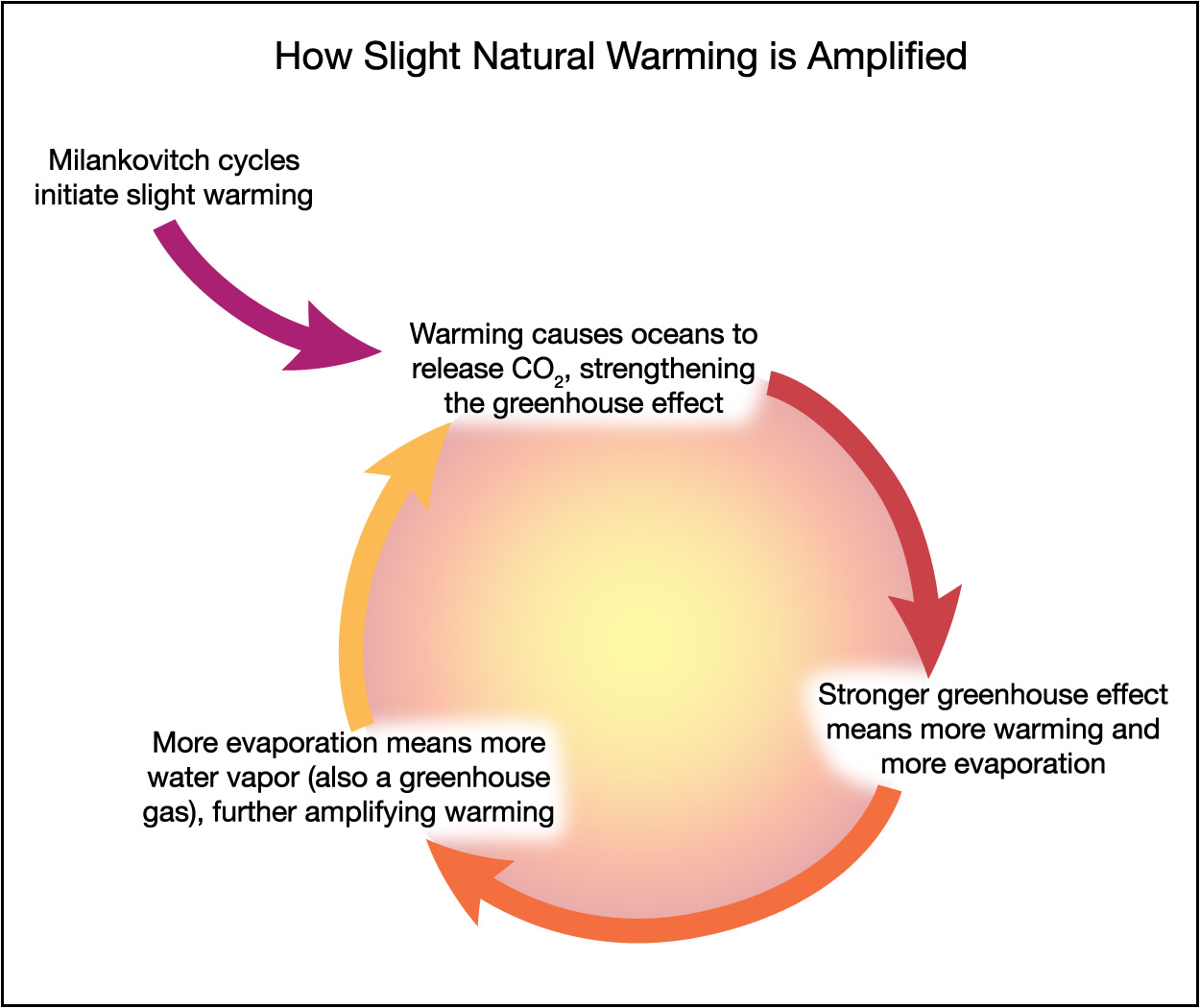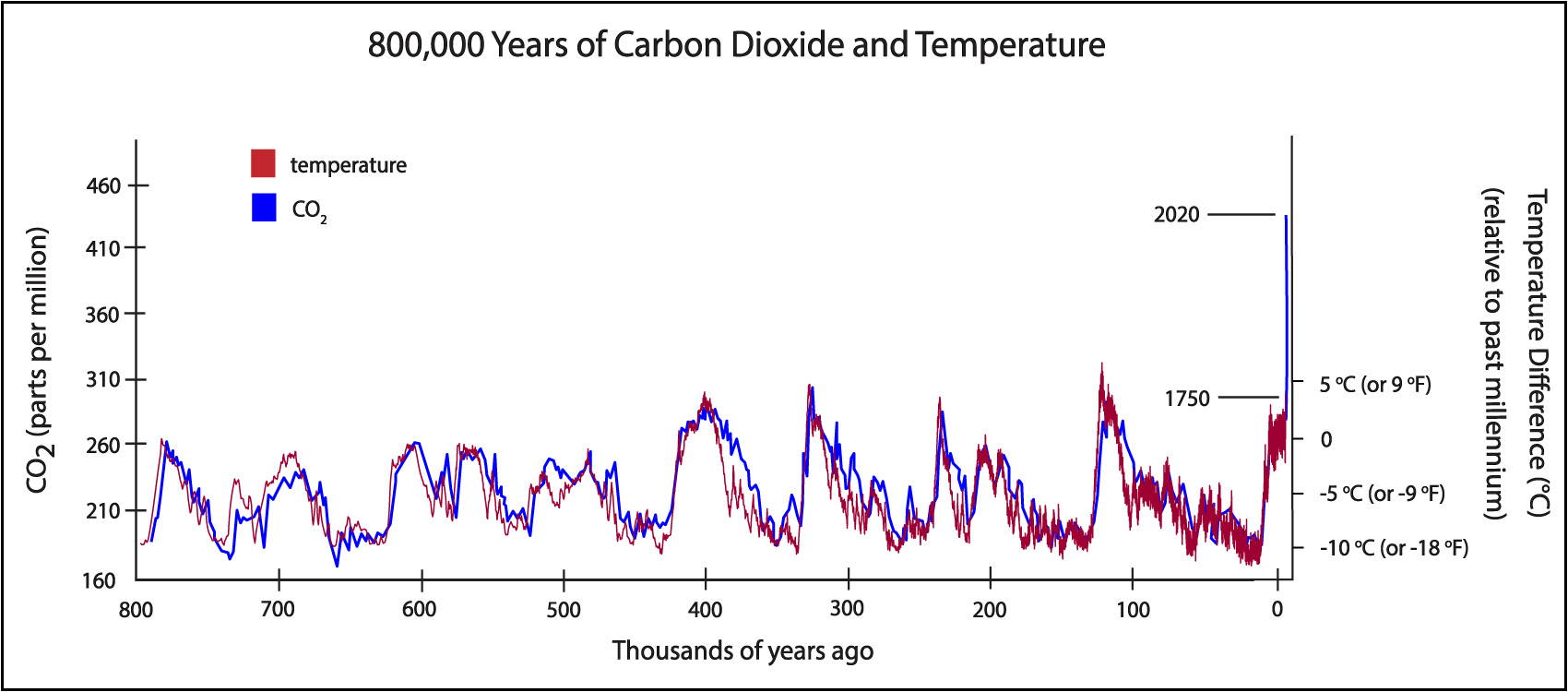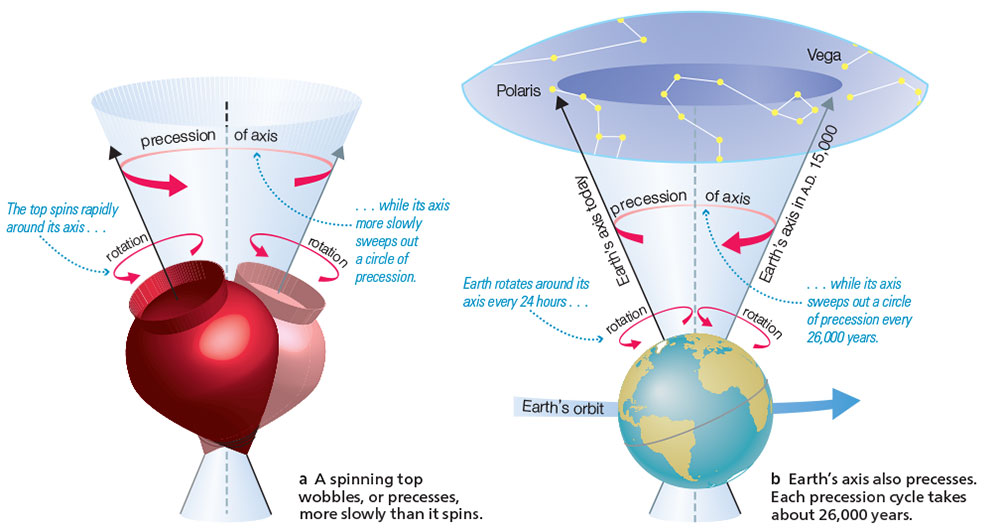What causes the natural climate cycles shown in the 800,000-year record?
You already know that the global warming of the past few decades is being caused by human activity, but what caused all the natural cycles of warming and cooling that we see in the 800,000-year record of Figure 7.1.4-1?
Many details of the answer to this question are not yet known, but the basic cause appears to be the combination of three types of small, cyclical change in Earth’s axis tilt and orbit that arise from gravitational effects of the Sun, Moon, and planets. You have already learned about one of these cycles of change: the precession of Earth’s axis, which occurs over a period of about 26,000 years (see Figure 2.21). The two others have periods of about 41,000 years and 100,000 years, respectively. Together, the three cycles are called Milankovitch cycles , after a Serbian scientist who was the first to investigate their role in climate change. (You can find a more detailed summary of the Milankovitch cycles on this NASA web page.)
When combined together, the Milankovitch cycles form a pattern that closely matches the climate cycles seen in the ice core record. In essence, the cycles cause sunlight to hit Earth slightly differently as time passes, and this triggers small changes in Earth’s climate. But there’s a very important point that goes along with this: By themselves, the changes in the way sunlight hits Earth as a result of the Milankovitch cycles are not enough to explain the large temperature swings that occur between the ice ages and the warmer periods in between. Instead, these cycles are “triggers” that initiate feedback processes that amplify the temperature changes.
Here’s how it is thought to work when a warm period begins (Figure 1): The changes due to the Milankovitch cycles warm Earth and the oceans a little bit. This warming causes the oceans to release some of their dissolved carbon dioxide into the atmosphere . The extra carbon dioxide in the atmosphere causes additional warming, which in turn leads to more evaporation from the oceans. The added water vapor further amplifies the warming, because water vapor is also a greenhouse gas. To summarize, a small warming caused by the Milankovitch cycle initiates a chain of reinforcing feedbacks that lead to a much larger warming.
An opposite set of changes amplifies the cooling side of the Milankovitch cycles (Figure 2). When a cycle initiates a slight cooling, the cooling causes the oceans to absorb carbon dioxide from the atmosphere. This weakens the greenhouse effect, further cooling our planet and reducing evaporation from the oceans. The reduced evaporation means less water vapor in the atmosphere, amplifying the cooling until Earth plunges into an ice age.



